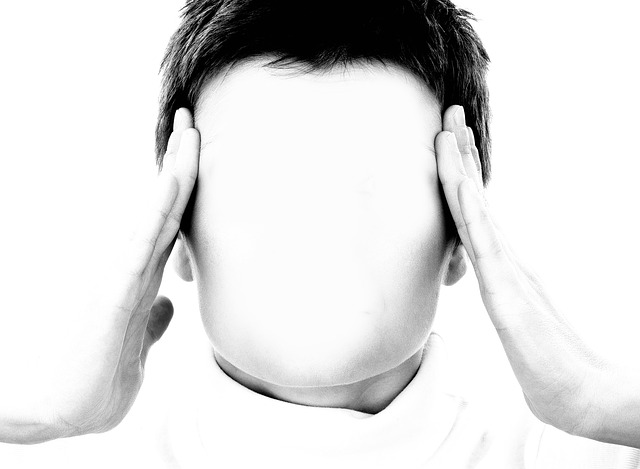'Bend or Break' Raises Awareness About Invisible Illness
/By Madora Pennington, PNN Columnist
Even though he was just a kid, people called Mitch Martow lazy. Too exhausted to maintain friendships and falling asleep in school, his classmates thought he was strange. Specialists couldn’t find a medical reason for his complaints, and psychiatrists had no answers either. Even morphine didn’t ease the pain that tortured him in his early teens.
One day, worn out from physical suffering that was compounded by so many doctors saying his pain was a mental issue, Mitch attempted suicide. He cried when he awoke in the ICU because he had not succeeded.
This is the story told in the documentary “Bend or Break.” Based mainly on Mitch’s blog posts, the film features interviews with Mitch and his family about how his mysterious illness turned their lives upside down and how a correct diagnosis changed all of that.
Mitch has Ehlers-Danlos Syndrome (EDS), a term for a number of similar, poorly understood disorders where the body fails to make stable collagen. As a result, the person has extreme flexibility, to the extent that their joints can bend backward.
With no obvious outward signs, many of us with EDS go decades without a diagnosis, despite frequently seeking care for its debilitating and perplexing symptoms.
MITCH MARTOW
When he was finally diagnosed correctly, Mitch’s family was troubled because EDS is under-researched and lacks effective treatments. For Mitch, his diagnosis made him happy: he was not crazy and could find others like him, which meant everything. It was the end of isolation.
To tell the story, Bend or Break showcases a young contortionist and dancer, Toria Summerville. Toria also has Ehlers-Danlos Syndrome, so she is capable of astounding feats of flexibility. Interspersed with the interview segments are Toria’s beautifully choreographed dances that express the emotionality of the Martow family’s experience.
‘I Felt Very Alone’
Toria was 19 when she participated in the documentary, but her performance has the maturity and depth of someone much older. From childhood, she always knew she was different but didn’t know why. With no understanding of what was wrong, it was up to her to get by and cope with unacknowledged and unaddressed symptoms.
When she was 5 or 6 years old, Toria would be awake all night, crying in pain. Doctors said it was growing pains. When she was in the 6th grade, she was put on medication for anxiety and depression. Doctors assumed she had an eating disorder, but she was allergic to many foods, a common problem with EDS.
“I felt very alone growing up and very confused with myself. I knew something was going on, but I didn’t know what,” Talia says.
She struggled with brain fog and fatigue. Her differences attracted comments from other kids, which felt like bullying. In dance class, others would laugh at her inability to control her superhuman flexibility.
Toria was often getting injured with dislocating joints and easy bruising. Concerned guidance counselors would ask if anyone was abusing her. Well-meaning adults put her in a peer support group, but she could not relate to the other kids. There, therapists offered helpful tools, but they were not what Toria needed, so it felt even more isolating.
At a performing arts high school, Toria found understanding. Her circus coach instinctively understood her and took her under his wing. “We worked on abilities that my body could do,” she says.
For Bend or Break, Toria dedicated herself to understanding and demonstrating what the Martow family experienced, a process that was emotionally challenging, not only because of what Mitch went through but because much of it hit close to home. She walked a fine line.
“I had to be sensitive that it was Mitch’s story, not mine. I had to be in tune with all the milestones he was going through and portray that with my movements and facial expressions,” she explained.
In one sequence, she dances in a straitjacket, an idea she came up with from the feeling of being trapped by so many misdiagnoses herself.
Bend or Break concludes with interviews of others with EDS. Like Mitch, they look perfectly healthy. No one would guess how debilitating their EDS problems are. The documentary drives home the difficulty of having an invisible illness — one not indicated by obvious signs of impairment. People with invisible illnesses and disabilities have a hard time getting believed.
Toria hopes Bend or Break will spread awareness about EDS to the general population and medical professionals in every field. Had she been diagnosed correctly at an earlier age, Toria could have avoided many injuries and gotten better help in school.
“We need to cut back the time to get a diagnosis. My life would have been a lot easier if I had known about EDS sooner,” she says.
Mitch has seen firsthand the positive effects Bend or Break is having. Medical doctors have thanked him for the film because it helped them understand patients with EDS or other invisible illnesses. He’s also spoken to psychology students who have watched the film and is hopeful that when they start working as mental health professionals, they’ll be cautious about insisting that a patient’s chronic pain is psychosomatic.
The film encourages healthcare providers to be careful with diagnoses like "conversion disorder," where a symptom is assumed to be mental because no physical cause can be found. Being treated that way nearly destroyed Mitch’s life. “I tried to use suicide to escape from it,” he says.
Madora Pennington is the author of the blog LessFlexible.com about her life with Ehlers-Danlos Syndrome. She graduated from UC Berkeley with minors in Journalism and Disability Studies.











